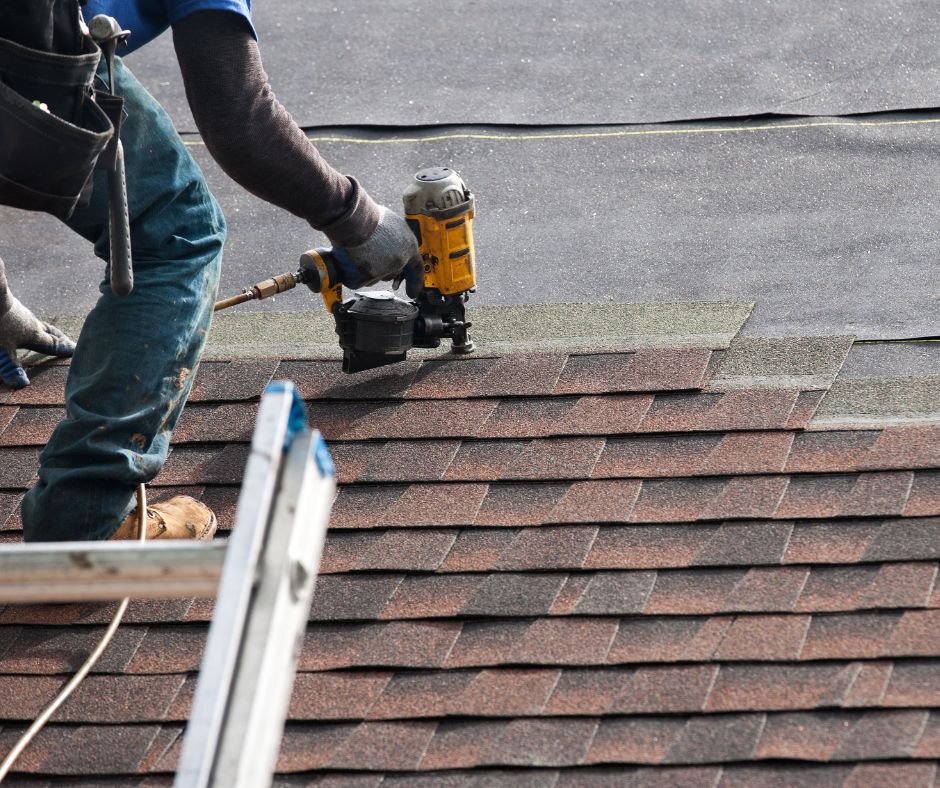We’ve got the lowdown on the best underlayment for roofing. In this article, we’ll discuss the importance of underlayment, the different types available, and the key factors to consider when selecting.
Our professional roofers will weigh the pros and cons of various underlayment materials and provide recommendations for different roofing situations.
Prepare to make an informed decision and ensure a solid foundation for your roof. Let’s dive in!
Importance of Underlayment
Regarding the importance of underlayment, we can’t overlook its role in providing a barrier against moisture and enhancing the roof’s longevity.
The underlayment acts as a protective barrier between the roof deck and shingles, thwarting water infiltration and safeguarding the roof against damage induced by leaks.
An essential advantage of underlayment lies in its capacity to furnish an additional layer of defense against severe weather conditions. It acts as a shield, preventing wind-driven rain, snow, and ice from seeping into the roof assembly.
Moreover, underlayment enhances the roof’s overall energy efficiency by minimizing heat loss and preventing air leakage. However, there are common mistakes that people make when installing underlayment.
These include improper installation techniques, using the wrong underlayment for the specific roofing system, and failing to seal the seams properly.
It is crucial to avoid these mistakes to ensure the underlayment performs its intended functions effectively.
Types of Underlayment
There are several types of underlayment available for roofing. Here are three common options:
– Asphalt Felt: This traditional underlayment is made of organic or fiberglass saturated with asphalt. Installation is straightforward, offering effective protection against water damage.
However, it can be prone to tearing and has a relatively short lifespan.
– Synthetic Underlayment: Made from materials like polyethylene or polypropylene, synthetic underlayment offers good durability and resistance to tearing. Lightweight, manageable, and offering superb waterproofing, it provides ease of use and reliable protection.
However, it can be more expensive than other options.
– Rubberized Asphalt: This type of underlayment combines asphalt with rubber polymers, providing superior waterproofing and durability. Resistant to tearing and capable of withstanding extreme temperatures, it ensures durability in challenging conditions.
However, installing it can be more challenging and generally more expensive.
When choosing an underlayment, consider each type’s specific advantages and disadvantages and the installation process to find the best option for your roofing project.
Factors to Consider When Choosing Underlayment
As we delve into the factors to consider when choosing underlayment for roofing, let’s continue our exploration of the different types discussed earlier.
When selecting underlayment, it’s crucial to consider cost-effective options and their environmental impact.
Cost-effective options can help keep the overall roofing project within budget while still providing adequate protection. Synthetic underlayments like polypropylene or polyester are often more affordable than traditional felt underlayments. They are lightweight, easy to install, and have good tear resistance.
Additionally, they are less prone to moisture absorption, which can prolong the roof’s lifespan.
From an environmental standpoint, underlayments made from recycled materials or those with low VOC emissions are worth it.
These options can reduce the carbon footprint of the roofing project and contribute to sustainability efforts.
Recommended Underlayment for Various Roofing Situations
For different roofing situations, we recommend using specific types of underlayment. Proper underlayment installation is crucial to ensure the durability and longevity of the roofing system.
In areas prone to high moisture levels, such as coastal regions, we recommend using a self-adhesive underlayment with a high water resistance rating. This will provide an additional layer of protection against water infiltration.
A synthetic underlayment with excellent thermal stability is ideal in areas with extreme temperature variations. It will help prevent the underlayment from warping or cracking.
When installing underlayment, it is essential to avoid common mistakes such as inadequate fastening, improper overlap, or not using the correct type of underlayment for the specific roofing material.
Following manufacturer guidelines and consulting with a roofing professional can help ensure proper installation and avoid costly repairs in the future.





